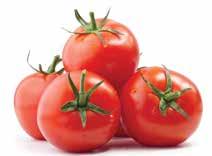TECHNICAL
UNDERSTANDING THE ESSENTIAL PLANT NUTRIENTS Words by Joachim Nachmansohn include Calcium (Ca), Magnesium (Mg) and Sulphur (S), and are called secondary nutrients. Micronutrients are required by plants in smaller quantities. They are also known as trace elements (TE). They include Iron (Fe), Manganese (Mn), Zinc (Zn), Copper (Cu), Boron (B), Chlorine (Cl), Nickel (Ni), and Molybdenum (Mo). Plants require all these nutrients for balanced crop nutrition. Lack of a nutrient limits plant production reducing the quality and yield potential of crops, as explained in Figure 2.
Plants are made up of carbon, hydrogen, oxygen (derived from air and water) and 14 nutrients that are essential for horticultural production Photo of a plant in a growth media rich in plant nutrients
Plant nutrients are like vitamin supplements supplied to plants to provide the necessary nourishment needed for growth, survival and reproduction. They are taken up by plants through the leaves and/or the roots. Nutrients are carried in solution in water or attach to soil particles. Plants express nutrient deficiency or excess (toxicity) by yellowing or browning of leaves, stunted growth and decreased crop quality and yield. These symptoms are usually clearly visible. Otherwise, a chemical analysis to determine nutrient concentration in the plant is the best tool to use. Acceptable nutrient ranges are illustrated in Figure 1.
Many plant nutrients Plants are made up of carbon, hydrogen, oxygen (derived from air and water) and 14 nutrients that are essential for horticultural production. These nutrients are divided into groups depending on the amounts needed by plants. Macronutrients are nutrients that plants require in comparatively large quantities. Nitrogen (N), phosphorous (P), and potassium (K) are the three main plant macronutrients and are called primary nutrients. Together they make up about 75% of the total nutrients that plants require for healthy growth. The remaining macronutrients
Significance of the Plant Nutrients Plants must be supplied with enough nutrients to meet their needs. The common mode of increasing availability of nutrients in the soil is by using fertilisers, either organic or inorganic. Nutrients in fertiliser need to be broken down into the form of specific ions (charged molecules) in order to become available to plants. The main plant nutrients and their significance in the production of crops are explained below. Nitrogen (N)
Nitrogen is the nutrient that promotes chlorophyll content and is therefore very important in the development of green foliage. It is one nutrient that forms part of the plant’s DNA, allowing plants to grow and reproduce. Nitrogen is taken up by plants through the roots. It is made available to plants through use of common nitrogen fertilisers such as Urea, Calcium Nitrate, NPK and through compost or organic manure. Phosphorous (P)
Phosphorous is known for its role in the transfer of energy. It is important in the transfer of food (energy) from the leaves to the other parts of the plant such as flowers, fruit and roots. Without it, photosynthesis (the process by which plants make their own food) cannot take place. It is usually supplied at planting to ensure full development from the start. Phosphorus is applied to the soil as a phosphate fertiliser. NZGROWER : MARCH 2021
49



























